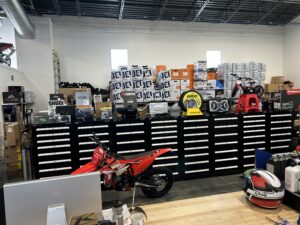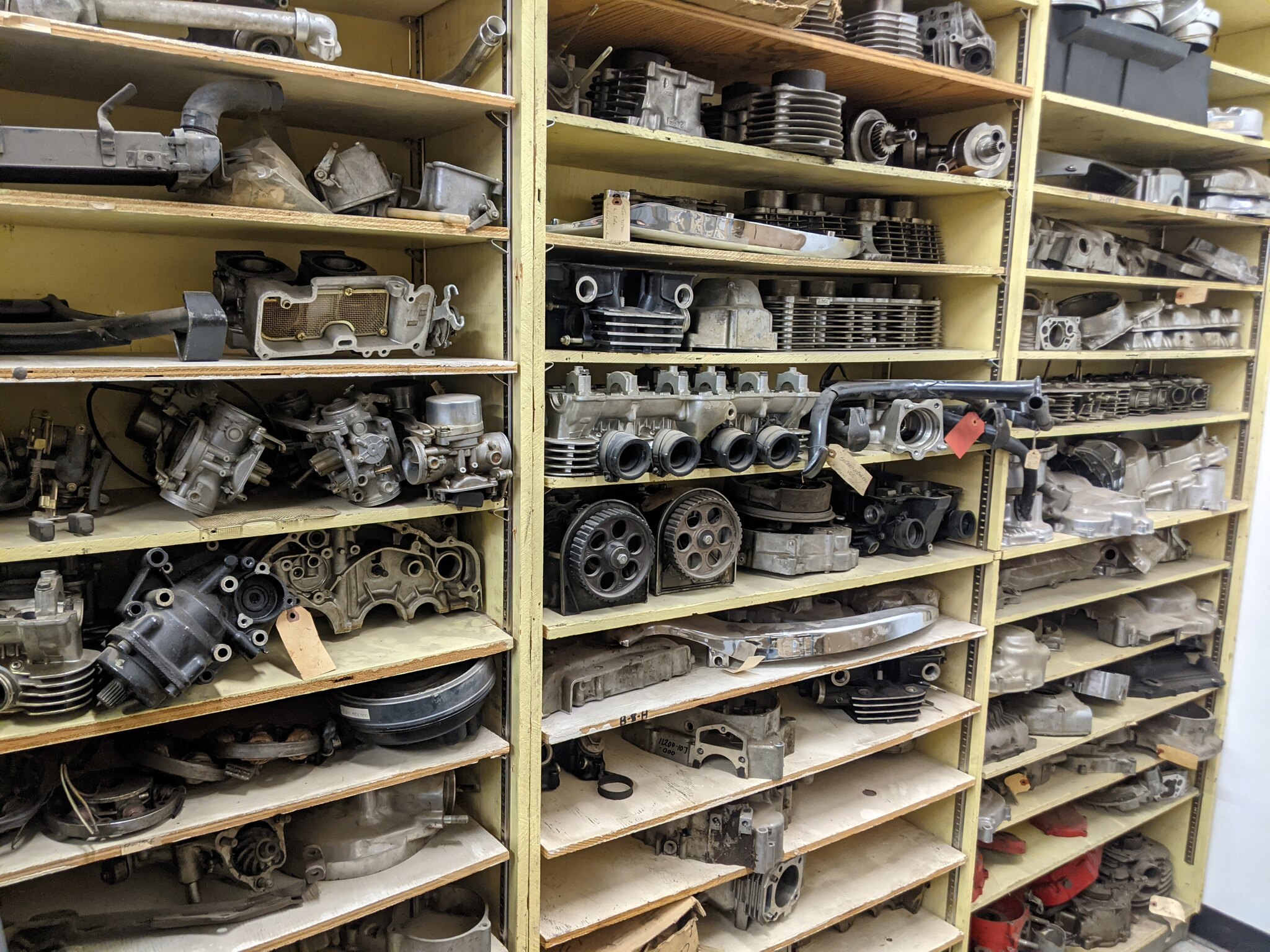Comprehending the Vital Parts of a Motorcycle: A Comprehensive Overview for Fanatics
For motorcycle enthusiasts looking to elevate their riding experience and guarantee their bikes run efficiently, comprehending the necessary components of a motorbike is extremely important. Each component, from the engine's intricate operations to the crucial duty of the braking devices, not just influences performance but also safety and comfort.
Engine Parts

The camshaft plays a critical duty in regulating the timing of the engine's valves, guaranteeing the precise opening and closing required for reliable fuel and air consumption, as well as exhaust expulsion. This timing is crucial to maintaining optimum engine performance and performance. In addition, the carburetor or fuel injection system, depending on the motorbike design, is in charge of mixing air with fuel in the proper proportion for burning.
The air conditioning system, either air or liquid-based, functions to keep the engine's temperature level within functional limitations, stopping overheating and making certain durability - moto parts nz. Each part, carefully designed and integrated, contributes to the seamless procedure of the engine, defining the motorcycle's power output and overall performance
Transmission System
Important to the bike's functionality, the transmission system ensures reliable power transfer from the engine to the wheels. This system consists of numerous essential elements, including the clutch, transmission, and final drive, each playing an important duty in converting the engine's power right into activity. The clutch, commonly operated by a hand lever, offers to disengage the engine and engage from the transmission, enabling smooth gear changes and regulated acceleration.
The transmission, often referred to as the transmission proper, contains a collection of gears that motorcyclists can by hand change through to adjust the bike's rate and torque output. These equipments are prepared in a sequence that makes it possible for the motorcycle to speed up smoothly and keep optimum engine performance throughout various rates. Most bikes use a sequential transmission, requiring the biker to change equipments in a predetermined order.
Braking Mechanisms
While comprehending the transmission system is crucial to using a bike's power, equally crucial is the ability to regulate and quit that power properly, which is where stopping devices enter into play. Brakes are critical for safety and security and performance, providing the cyclist with the required control to navigate numerous terrains and problems. Generally, bikes include two kinds of stopping systems: disc brakes and drum brakes.
Disc brakes are more widespread in modern-day motorcycles as a result of their exceptional performance. They include a brake disc, caliper, and pads. When triggered, the caliper presses the brake pads versus the spinning disc, converting kinetic power into blog here warm, thereby slowing down the wheel. This system offers better warmth dissipation, consistent performance, and enhanced quiting power, specifically in wet conditions.
Alternatively, drum brakes, though much less typical, are still found in some motorcycles. They function by pushing brake footwear against the internal surface of a drum connected to the wheel. While generally much less efficient in heat dissipation and stopping power, drum brakes are easier and more cost-efficient.
Comprehending these braking systems' nuances allows motorcyclists to maintain their motorcycles effectively and value the design that makes sure efficient and risk-free stopping.
Suspension and Guiding
Suspension and guiding systems are important components that substantially affect a bike's handling and trip convenience. The shock absorber, containing forks at the front and shock absorbers at the rear, absorbs road abnormalities, enhancing stability and control. Front forks, typically telescopic or upside down, compress and rebound to reduce impacts, while back shock absorbers maintain tire contact with the roadway, critical for traction and safety and security.
Steering, centered around the handlebars, connects the motorcyclist to the motorcycle's directional control. The steering head bearings guarantee smooth procedure, permitting accurate maneuverability. Appropriate placement and maintenance of these bearings are vital for predictable steering action and minimizing cyclist exhaustion.
The suspension's adjustability is an additional vital aspect; preload, damping, and rebound setups permit personalization to match different riding conditions and designs. This flexibility is vital for optimizing efficiency, whether navigating metropolitan streets or tackling sturdy routes. Technologies like digital suspension systems offer real-time adjustments, boosting experience high quality throughout varied find terrains.

Electric Systems
After ensuring a controlled and smooth experience with reliable suspension and steering systems, attention turns to the electrical systems, a pivotal facet of modern motorbikes. These systems play an essential role not just in starting the engine however additionally in powering various parts that improve the performance and safety of the bike.
At the heart of a motorcycle's electrical system is the battery, which shops electric energy essential for beginning the engine and powering supporting systems - motocross parts nz. The generator or generator, coupled with the rectifier-regulator, ensures the battery remains charged while the bike functions, transforming mechanical energy into electric power and preserving voltage degrees
The ignition system, an additional important component, is responsible for stiring up the air-fuel mixture in the engine's cyndrical tubes. Modern bikes often make use of a digital ignition system, supplying higher performance and reliability contrasted to standard systems.
Lights systems, including fronts lights, tail lights, and indications, are likewise essential, making certain presence and safety and security for the cyclist. Extra digital components such as sensors, control devices, and displays add to advanced attributes like gas injection administration, anti-lock braking systems (ABS), and digital control panels, additionally improving the riding experience.
Conclusion
A detailed comprehension of a motorbike's essential components, including the engine, transmission system, braking devices, suspension, steering, and electric systems, is Our site essential for fanatics aiming to enhance efficiency, comfort, and security. Proficiency of these components permits informed choices relating to upkeep and upgrades, ultimately enhancing the riding experience. By integrating this expertise, bikers can guarantee their motorbikes operate at peak performance and integrity, thus maximizing both pleasure and durability of their automobiles.
For motorbike fanatics looking to raise their riding experience and ensure their bikes run smoothly, comprehending the essential elements of a motorcycle is paramount.Indispensable to the bike's capability, the transmission system ensures efficient power transfer from the engine to the wheels.While comprehending the transmission system is key to utilizing a motorcycle's power, equally important is the ability to regulate and stop that power properly, which is where stopping mechanisms come right into play. Generally, motorcycles include 2 kinds of braking systems: disc brakes and drum brakes.
A complete comprehension of a motorcycle's important elements, consisting of the engine, transmission system, stopping devices, suspension, guiding, and electrical systems, is indispensable for fanatics aiming to enhance security, comfort, and efficiency.